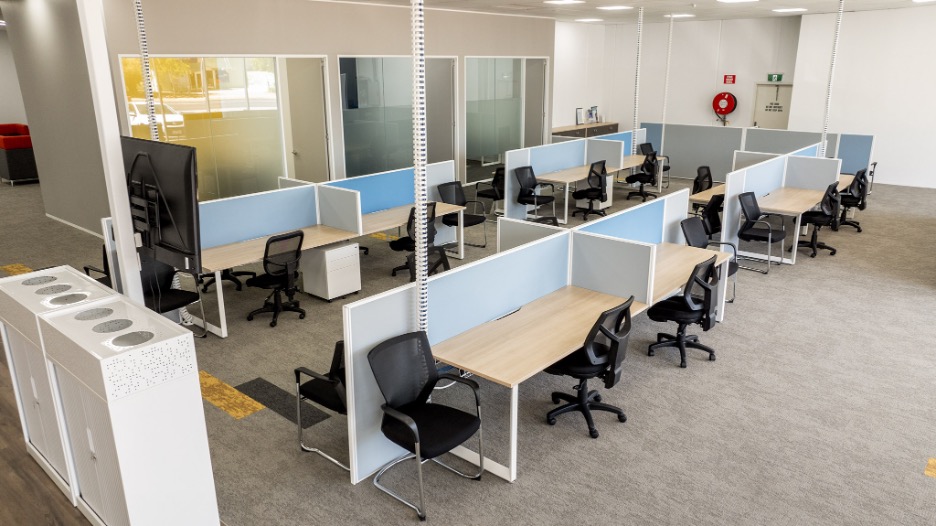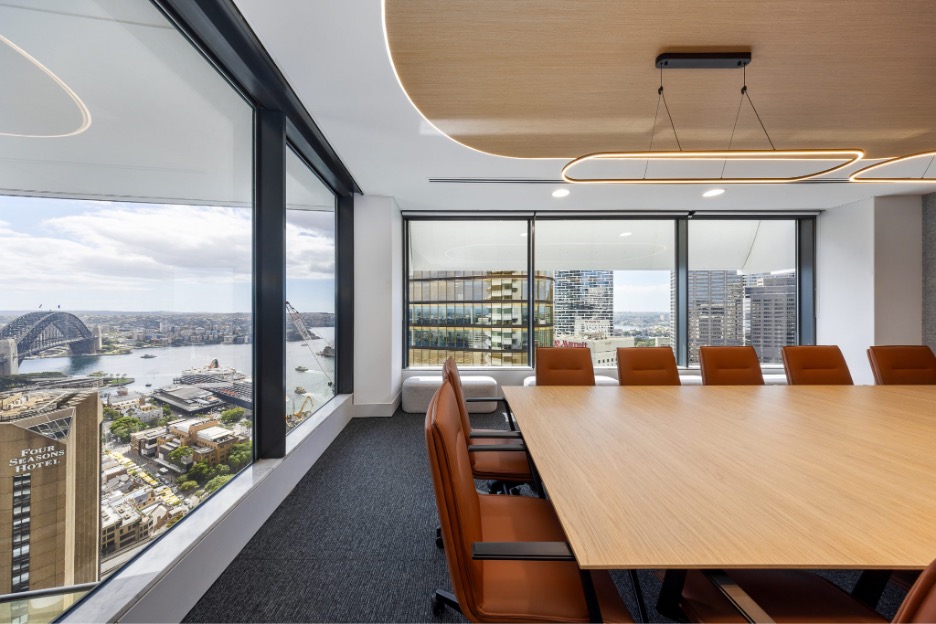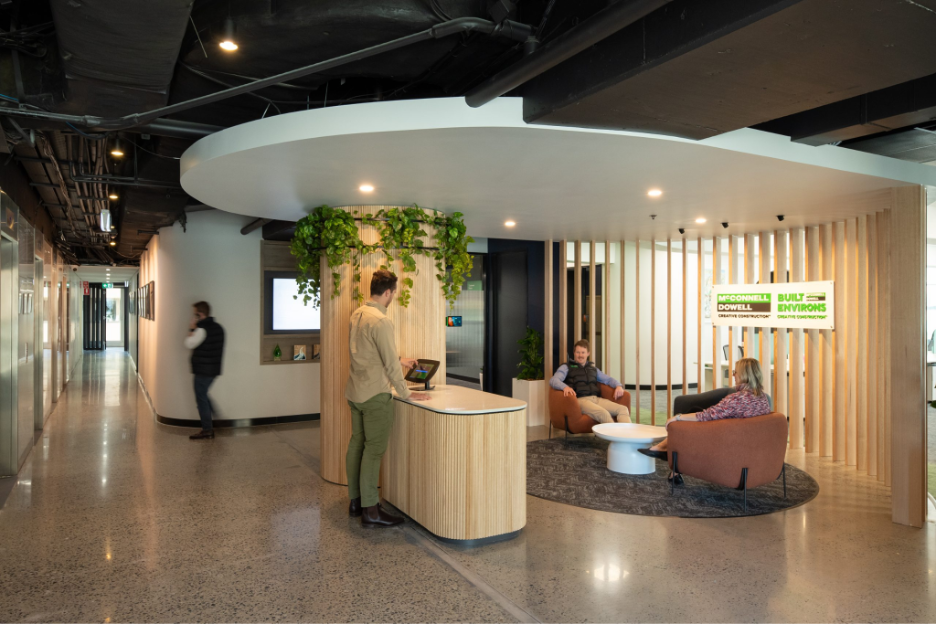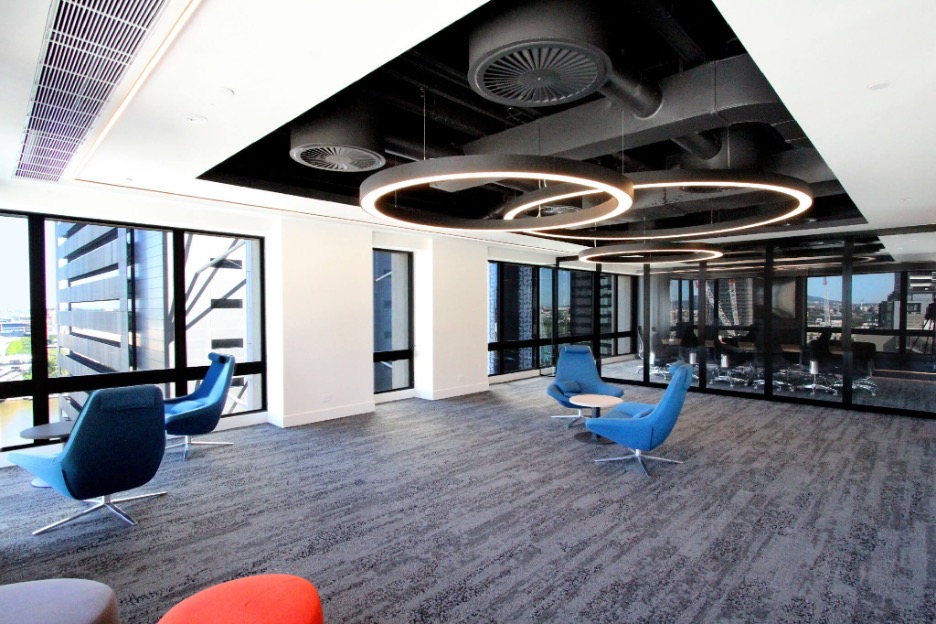Office refurbishments have become critical for modern enterprises, thanks to the trend of changing business facilities into not just efficient but also visually appealing workspaces.
The need for workplace refurbishments in Australia has expanded dramatically, driven by the growing demand for adaptable workspaces following the pandemic.
According to a 2021 analysis, the Australian office refurbishment market is worth almost $6 billion every year, showing the demand for the development of effective and motivating workspaces.
What Does Refurbishment Mean?
A refurbishment can be defined as upgrading and improving an existing space with the goal of improving its condition, aesthetics, and even function.
In the case of office refurbishments, business owners will make an interior space look more suitable for their employees by installing new floors, ceilings, partitions, and furniture, among many others.
Refurbishments can range from basic installations to complete overhauls. The important thing is that they reflect and embody the company’s branding and what they need in their day-to-day.
What’s the Difference Between Refurbishment & Renovation?
Refurbishment and renovation are two often interchanged words but they actually differ in meaning.
- Refurbishment. Focuses on updating and improving existing elements of the office. Usually it’s just cosmetic changes. Occasionally, it may also refer to upgrading fixtures, fittings, and other temporary items. The main goal is to enhance the overall look and maybe function without doing any major changes to the building’s structure.
- Renovation. This term is usually reserved for heavier, more demanding work. This process involves more extensive changes. Oftentimes, these changes include structural alterations, which is why they’re also more costly. Basically, renovations can change the layout, add new rooms, or completely overhaul the space.
Why Should You Refurbish Your Office?
Office refurbishments can transform your workspace into a more productive and visually appealing environment.
Here are a few reasons to consider refurbishments.
- Optimize space. Efficiently utilizing the available space can help meet evolving business needs and boost productivity.
- Update aesthetics. Modernizing your office to align with current design trends not only enhances visual appeal but also creates an inspiring work environment.
- Improve functionality. Enhancing the office layout can improve workflow, increase productivity, and make the workspace more efficient.
- Brand representation. A cohesive design can reflect your company’s identity, values, and culture, making a strong impression on clients and employees alike.
What Are the Benefits of Refurbishment?
Refurbishing an office space has plenty of benefits, both for the employees and the business itself.
According to the Office of the Victorian Government Architect, a well-designed office can boost employee productivity by up to 20%. Research also shows that the work environment directly impacts employees' performance and job satisfaction.
Not to mention, a modern, aesthetically pleasing office attracts potential employees, making your business more appealing in a competitive job market. It also fosters a positive atmosphere that one would like to go back to over and over again.
Lastly, office refurbishment can help business as well. Visitors and clients alike can immediately sense professionalism and attention to detail once they enter a thoughtfully designed office. This can create a positive first impression that can influence business decisions, partnerships, and recruitment outcomes.
What Are the Current Office Design Trends?
Office design in Australia is evolving rapidly, reflecting global trends with a local twist. Here are some of the standout trends for 2024 and their estimated costs.
Flexible and Modular Spaces
 WCIG Office © Bowen Interiors
WCIG Office © Bowen Interiors
Modern offices are shifting away from traditional cubicles to flexible and modular layouts.
This includes moveable walls, multipurpose furniture, and acoustic dividers, allowing spaces to adapt quickly to different needs.
Basic flexible spaces start at around $300 per square meter, with high-end modular setups reaching up to $1,000 per square meter.
Sustainable Eco-Friendly Practices
Sustainability is a major focus, with offices incorporating renewable energy sources, recycled materials, and energy-efficient lighting.
Features like green roofs, living walls, and smart water refill stations are becoming standard.
Costs for sustainable designs range from $500 to $2,000 per square meter, depending on the features included.
Mental Health and Wellbeing
 Sumitomo Sydney © Contour Interiors
Sumitomo Sydney © Contour Interiors
Designs that prioritize employee wellbeing are also on the rise, what with the increasing awareness about mental health.
Designs catered to this purpose include spaces with ample natural light, ergonomic furniture, and areas for relaxation, such as gyms and meditation rooms.
These features can cost between $400 and $1,500 per square meter.
Hybrid Working Concepts
Post-pandemic, more and more offices are getting redesigned to support both remote and in-office work. This involves adaptable layouts with collaborative zones and private areas.
Costs for hybrid office designs typically range from $350 to $1,200 per square meter.
Local Cultural Integration
Incorporating local culture into office designs adds a unique touch. This might include local artwork, reclaimed woods, and native plants.
Costs for these customizations vary widely but generally start at $400 per square meter.
Biophilic Design
 McConnell Dowell © Contour Interiors
McConnell Dowell © Contour Interiors
Biophilic design, which incorporates natural elements into the workspace, is gaining popularity. Features like indoor plants, natural colour schemes, and water features are common.
For these features, prepare to spend around $300 to $1,500 per square meter.
Social Spaces
 Gallery © Fast Fitouts
Gallery © Fast Fitouts
Creating social spaces like barista-style reception areas, bars, and informal lounges is a growing trend.
These areas encourage social interaction and can double as casual meeting spots.
The cost for these spaces typically ranges from $500 to $2,000 per square meter.
What Do You Need to Consider Before Refurbishing Your Office?
Refurbishing your office can transform your workspace, but it does involve several key considerations to get it right. Here are some essential points to keep in mind.
- Cost. Budgeting is an important factor. Refurbishments can range from simple updates to complete overhauls, but you need to consider both initial costs and long-term savings. Fit-outs range from $500 to $2,000 per square meter, depending on complexity.
- Upkeep. Think about the maintenance requirements of new installations. Choosing durable, low-maintenance materials can minimize long-term costs and maintenance efforts.
- Timeline. Plan for potential disruptions during refurbishment and set realistic project timelines. This helps manage expectations and minimizes downtime.
- Employee needs. Involving employees in the planning process can provide insights into practical needs and preferences. The design should support their work habits, preferences, and overall well-being.
- Compliance. All changes must comply with Australian building codes and occupational health and safety regulations to avoid any legal issues or safety hazards.
- DIY vs. professional application. While DIY can save money, professional services offer quality and compliance with safety standards. Larger projects often benefit from professional expertise for optimal results.
How Much Does It Cost?
The price of an office refurbishment can vary widely based on the project's scope and the quality of materials used.
For a small office (under 100 square meters), costs can range from $1,000 to $5,000. Medium-sized offices (100-500 square meters) might cost between $5,000 and $20,000, while larger projects (over 500 square meters) can exceed $20,000.
Here are some tips to get the proper costing for your office refurbishment project.
- Assess needs. Identify the specific changes your office space requires, such as layout adjustments, new furniture, or updated finishes. This helps in creating a detailed plan.
- Get quotes. Reach out to multiple contractors to get a range of estimates. This allows you to compare costs and services, ensuring you get the best value for your budget.
- Budget for contingencies. It’s wise to set aside an extra 10-15% of your budget for unexpected expenses. This cushion can cover unforeseen issues that may arise during the refurbishment process.
Final Thoughts
Office refurbishments can significantly enhance productivity, employee satisfaction, and brand image.
By embracing current design trends such as flexible and modular spaces, sustainability practices, and biophilic elements, you can create a workspace that meets modern demands and inspires creativity.

